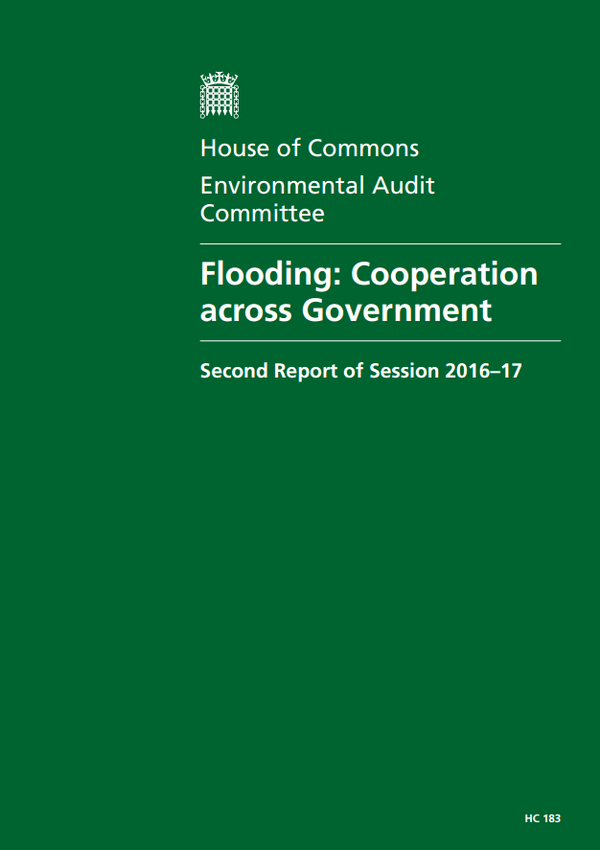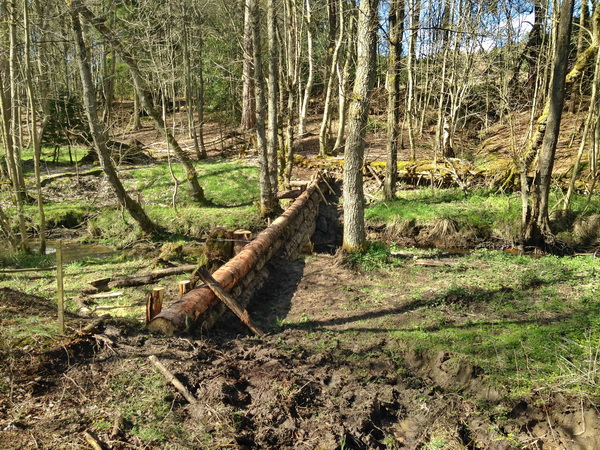
We are disappointed that the Government has kicked this into the long grass by commissioning another review. This is an issue that now requires action.”

(Flooding: Cooperation across Government. House of Commons Environmental Audit Committee June 2016)
(Image: ‘Flooding: Cooperation across Government’ report cover)
We are pleased that the report published yesterday by the Environmental Audit Committee recognises the importance of SuDS and Natural Flood Management (NFM), and questions the need for further review.
The benefits of SuDS and NFM are well-established. Further review is simply procrastination – we should be getting on with Slowing the Flow by legislating effectively and promptly.
Hugh Ellis from the TCPA puts it well when he says:
“Do your customers want to pay money to pay your insurance bills, or do they want to pay money for a better built environment?”
However, we disagree with his view that “...the difficulty with the new process was the economics, because the benefits of sustainable urban drainage are long term to end users but the costs, of course, fall on developers."
Many studies have shown that properly-integrated SuDS need not cost more than conventional drainage. For new developments, the cost of implementing SuDS can actually be significantly lower than the cost of traditional drainage systems. In one development we were involved in, we were able to show that by replacing the traditional drainage scheme with our SuDS design, the cost of the drainage for the project would have decreased by almost 1/3! (And they would have saved ongoing maintenance costs, of course, because landscapes need maintenance anyway, and they would have had no conventional drainage system to maintain...)
The report acknowledges the successful NFM scheme of our friends in Pickering:
“The Government should make sure that funds are available to fund more pilots to continue to make the case for this approach and to protect those places like Pickering which might benefit from a cheaper natural flood management project.”

(Image: Leaky Dam at Pickering)
We hope that this will encourage a continuation of the support and collaboration from the highest levels that has begun to be shown for NFM in places like Pickering, Cumbria, and recently to the newly-formed Calder Catchment Flood Studies Group.
The development of a Calderdale Catchment Plan (which we are contributing to) is to be welcomed. As Dieter Helm is quoted in the report:
“Flooding is about what happens to catchment systems. It is not about individual houses and it is not about individual flood defences, although they all have roles to play. To work out how much you should spend and how you should spend it on flood defence, you need to start with a proper catchment view.”
By Amanda McDermott CMLI